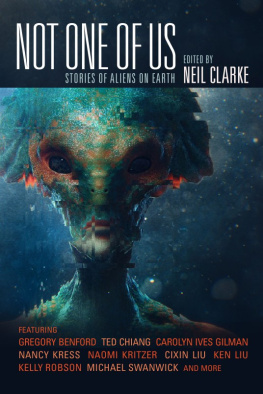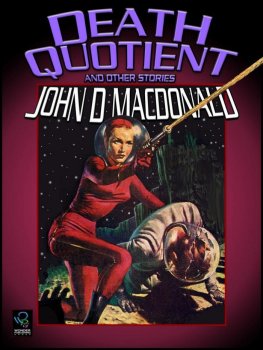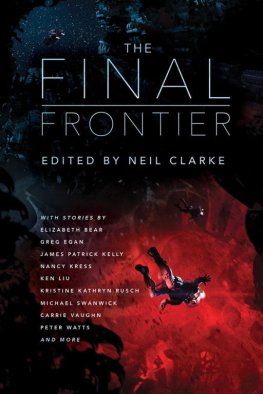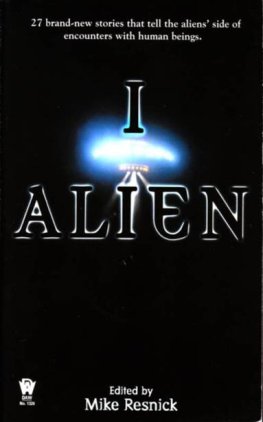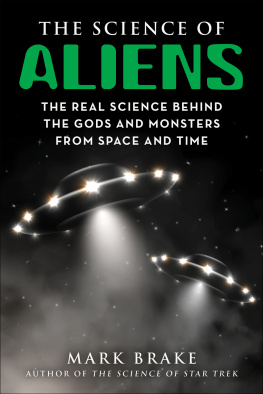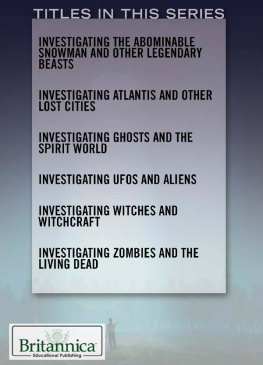
Copyright 2018 by Neil Clarke
All Rights Reserved. No part of this book may be reproduced in any manner without the express written consent of the publisher, except in the case of brief excerpts in critical reviews or articles. All inquiries should be addressed to Night Shade Books, 307 West 36th Street, 11th Floor, New York, NY 10018.
Night Shade books may be purchased in bulk at special discounts for sales promotion, corporate gifts, fund-raising, or educational purposes. Special editions can also be created to specifications. For details, contact the Special Sales Department, Night Shade Books, 307 West 36th Street, 11th Floor, New York, NY 10018 or info@skyhorsepublishing.com.
Night Shade Books is a registered trademark of Skyhorse Publishing, Inc. , a Delaware corporation.
Visit our website at www.nightshadebooks.com.
10 9 8 7 6 5 4 3 2 1
Library of Congress Cataloging-in-Publication Data is available on file.
ISBN: 978-1-59780-957-3
Cover illustration by Jacques Leyreloup Cover design by Claudia Noble
Please see page 593 for an extension of this copyright page.
Printed in the United States of America
If you find a bit of yourself in these stories,
this book is for you.
Contents
Introduction
T hroughout the science fiction landscape, aliens have been used to illustrate our own best and worst traits, but from a distance that makes it more palatable than a closer look in the mirror. They are portrayed as invaders, refugees, saviors, observers, outsiders, opportunists, and sometimes as beings that barely notice our existence. Yet, outside of the stories, the idea that aliens are visiting Earth is pretty much consigned to conspiracy theories and myths. While many governments and private organizations have investigated claims and made contingencies for the possibility, we have no credible evidence to suggest that we have been visited by beings from other worlds.
But how would we react if they did? What would they do? And why are they here?
Our history is littered with examples of how we have treated our own kind in similar situations, and it isnt always pretty. Will we behave any differently if and when aliens do make contact? Science fiction challenges us to think about those possibilities, often drawing on history in a way that causes us to see things from another perspective. Traversing those paths can evoke multiple emotions, with some tales experienced as entertaining, thoughtful, and sometimes downright terrifying.
For example, one of the most popular tales of alien invasion is War of the Worlds by H. G. Wells. Wells followed in the vein of classic invasion literature of the time, but through the Martians, he created a power that mirrored the attitudes of the British Empire. This allowed him to turn the spotlight on the problems caused by imperialism and social Darwinism, calling into question issues of race, ethnicity, and class in his time. Written sometime between 1895 and 1897, it has never been out of print and has been adapted for several films and other performances, including a famous panic-inducing radio program in 1938. While Wells was not the only one writing about these things, his allegorical approach has actually proven more enduring.
And while invasion stories might be one of the first to come to mind, the science fiction field, both in print and film, have covered a wide spectrum of scenarios that led to aliens being on Earth. For example, Who Goes There? by John W. Campbellthe story that inspired the movie The Thing was about a twenty-million-year-old survivor of a crashed ship that essentially feeds on people. Is it a monster or something just trying to survive? But when Peter Watts chose to tell the tale from the monsters perspective, we see a creature that is trying to help save us from our own isolated minds and become part of something greater. It simply cannot understand why we resist its own sacred communion, and believes it has a responsibility to help us evolve...
The movie E.T. provides yet another look at the alien trapped on Earth, but this time centered on an alien who just wants to go home after being mistakenly left behind by an interrupted research expedition. Our government plays the part of the monster in this particular scenario as they try to capture him throughout the film. The heart of the tale is one of a forbidden friendship between children and the alienwho can be seen as childlike itselfand their efforts to help him return to his kind. Another film, District 9 , portrays yet another refugee scenario, which plays upon the themes of social segregation and xenophobia and is heavily influenced by the era of South African apartheid. These might be more challenging stories to telland sellhad the aliens been replaced with humans, which makes the art that much more poignant in its allegorical connection. It aims for subtle and overt and ultimately succeeds.
Arthur C. Clarkes novel Childhoods End also made into a TV miniseries of the same namegives us a tale of the alien as potential savior. Here, they come to Earth to help bring about an almost utopian age under their supervision, but in the process, humanity begins to lose its identity and culture. While the aliens motivations may be well-meaning and driven by a higher-power, the consequences are significant and frightening. You cant help but question the trade-off by the end of the book.
Or sometimes the underlying issues are far more simplistic. For example, another take on the alien as savior trope is Superman, a refugee alien whose powers grant him the ability to combat the forces of evil; or Doctor Who, a time-traveling alien that acts as a guardian of Earth. Here, the alien hero is a reassuring presence, a role often symbolizing a protective parent-child relationship, and in these specific stories we see that common bond. The alien is something larger than life, able to take on the overwhelming dangers and provide hope and escape where needed.
For others, however, these portrayals have been significantly problematic. Despite being alien, they often appear human, typically representing some of us much more than others. You can see this in the recent decision to have Doctor Whos latest incarnation be female, which created some controversy, but was also met with high praise or ambivalence from others. Given the aliens frequent role in demonstrating our own problems, it is not surprising that it should start addressing this one, particularly now. Science fiction has always embraced the unknown, the uncomfortable, and the controversial. There hasnt been a time when social and political issues havent influenced the genre, period. Science fiction is, by nature, a literature that constantly challenges us. The best of those stories become timeless.
In exploring the often popular first contact theme, this avenue allows the author to illustrate the difficulties two groups can have because of culture, language, and tradition. One of my favorite stories involving this subject closes out this anthology, but for me, the more interesting aspect is what happens after weve found each other. I find things really get moving after the diplomats, scientists, and linguists have started the ball rolling and the two societies have to learn to coexist in spite of all our issues.
Ultimately, their journey is our own, whether it be stories of hope, where we find a way to live, work, and love together; or stories of persecution simply for being different. Aliens are the ultimate outsiders, a sentiment to which many of us can can relate.
Maybe someday, one of them will read this book.
Neil Clarke
May 2018
Note: The title of this book is shared by a Peter Gabriel song and a small press science fiction magazine, both of which are significant in their own ways. I admire both, but neither are connected to this anthology.
Next page
